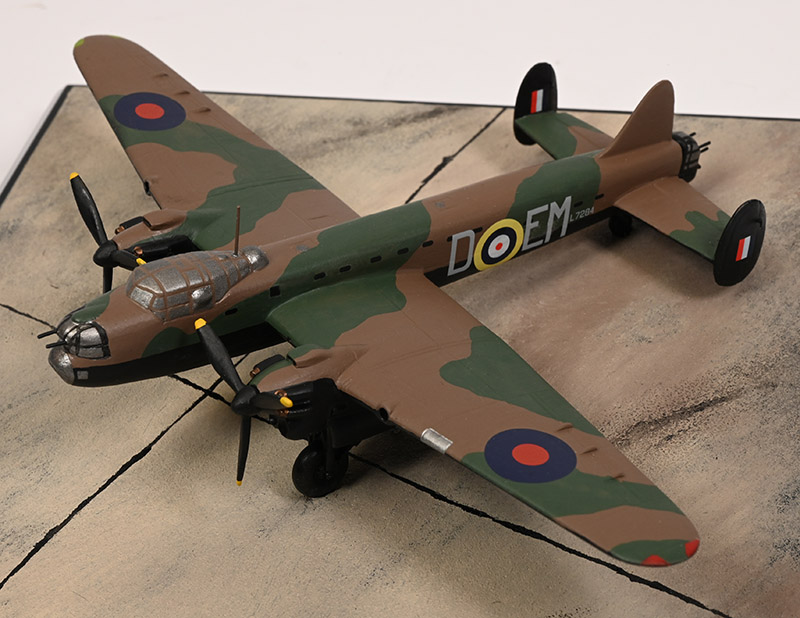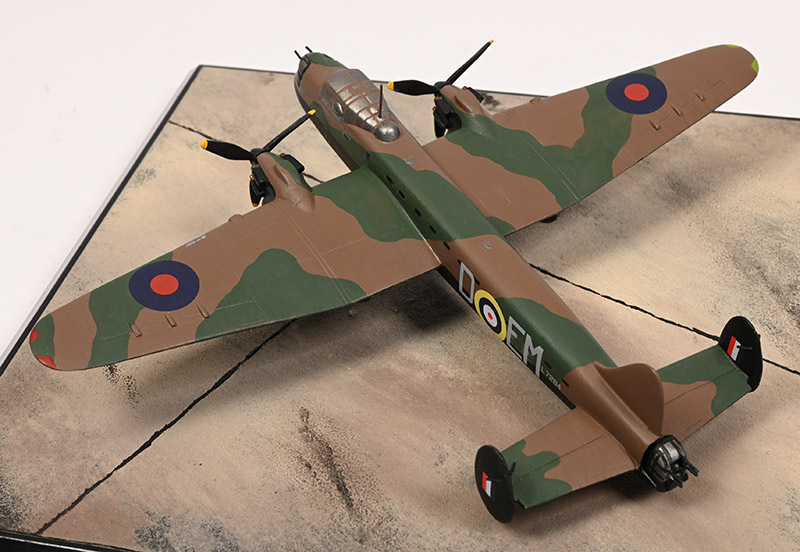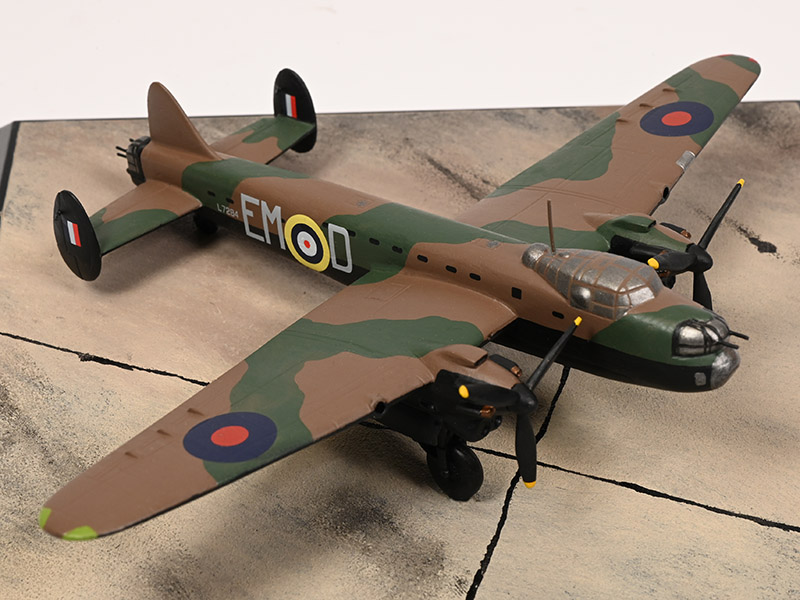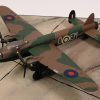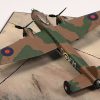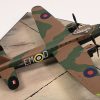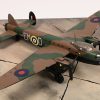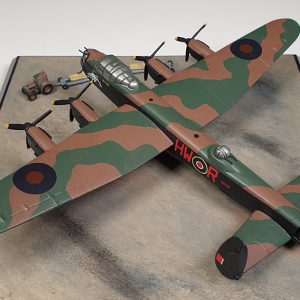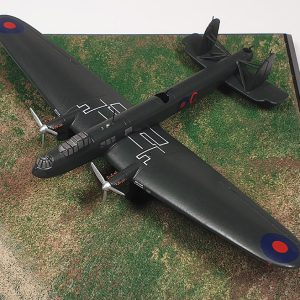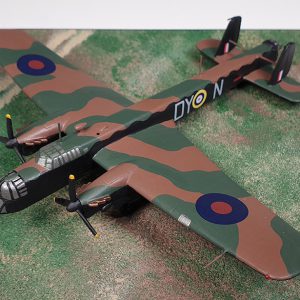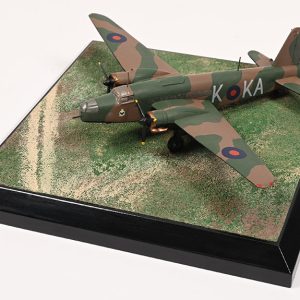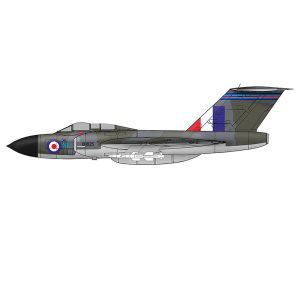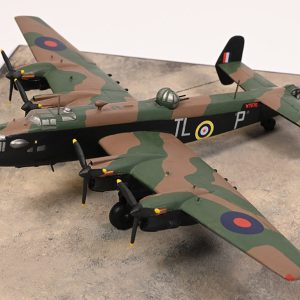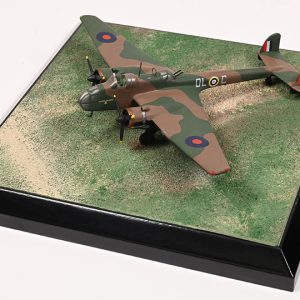Avro Manchester B Mk I L7284 EM-D
207 Squadron, Flight Officers Peter Burton-Gyles, Brest Raid, February 1941
The Avro Type 679 Manchester was designed by A.V. Roe & Company (Avro) Chief Designer Roy Chadwick to Specification P.13/36 which called for a twin engine medium bomber. Two prototypes were ordered with L7246 making its maiden flight at Ringway on 25th July 1939. Avro selected the 1,760 hp 24-cylinder Rolls-Royce Vulture I engine to power the Manchester. When initially flown, the Avro 679 Manchester tail section featured a low-set tailplane with twin fins. Following early test flying, a third central fin was added, although only the outer fins were fitted with rudders. The second prototype, L7247, flew in May 1940, with defensive armament comprising front, rear and ventral Frazer Nash turrets, each with two 0.303 machine guns. The wingspan of the second prototype was increased by nearly ten feet by comparison to that of the first aircraft.
An initial production order for 200 Manchester Mk I aircraft was placed. A further 100 aircraft were ordered from Metropolitan-Vickers Ltd, to be built at Trafford Park. Deliveries from A.V. Roe commenced in July 1940, whilst Metropolitan-Vickers aircraft followed a full nine months later. The latter were severely delayed when their Trafford Park factory was extensively damaged by a Luftwaffe bombing raid in December 1940. This resulted in the total destruction of what would have been their initial batch of thirteen Metropolitan-Vickers built aircraft. The first delivery from Trafford Park eventually took place in March 1941.
The Rolls-Royce Vulture engine suffered frequent failures but understandably the engine manufacturer had directed all of their attention to the progressive development of the Merlin engine, rather than diverting resources to the troublesome forerunner. Later production aircraft are recognised by a streamlined dorsal turret, modified empennage and by the tailplane span being increased to 33 feet. The outer tail fins were also increased in height and made more elliptical in shape whilst most obvious of all, the central fin was removed. The Manchester was withdrawn from operations in mid-1942, following which it was deployed as a trainer to convert crews to the Lancaster. A four-engine development using Merlin engines was trialled by the modification of a Avro 679 Manchester (BT308), this aircraft becoming in effect, the first prototype for the famous Avro 698 Lancaster. Such was the promise of the Avro 698 Lancaster that Manchester production was curtailed. The final production numbers were 157 aircraft built by Avro themselves and 43 by Metropolitan-Vickers.
Manchester Mk I L7284, EM-D, was the ninth production airframe, and as such was built without a dorsal turret. The aircraft participated in the operational debut of the type, targeting Brest on 24th/25th February 1941, with Flight Officers Peter Burton-Gyles and Leslie Syrett at the controls. On returning to base, L7284 force landed at Waddington due to an undercarriage hydraulics failure. It later passed to other units and was struck off charge in late 1942.
L7284 is painted in Bomber Command’s early war camouflage of Dark Earth and Dark Green A scheme, which extends down the fuselage sides, the under-surfaces are black.


